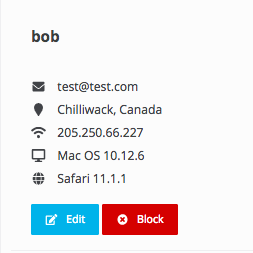How to Implement SPIN Selling for Your Company

How to Implement SPIN Selling for Your Company
In this blog, we will be talking about SPIN implementation. But, before that you need to understand the meaning, scripts and framework behind it.
Lessons From Training Our Bot to SPIN Selling.

One of the most expensive sales research undertakings in modern history comes from a man called Neil Rackham. The research was all about implementing SPIN selling.
Neil spent, in today’s money, $30 million to understand what differentiated good salesman, from a great one. He analyzed over 35,000 sales calls over 12 years, with an aim to codify the best techniques for sales.
Neil Rackham’s book, “Spin Selling”, remains one of the most well-known – not to mention oldest – selling systems. A major reason for the success of SPIN selling was it was one of the earliest books to imbibe tips and tricks to better your sales pitch, that was backed by extensive original research.
Who could’ve guessed that’d catch on?
Great, so What is SPIN?
The meaning of SPIN is an anagram of the four-step process that Neil Rackham outlined for a successful sales pitch. Each step lays out a sequence of questioning; the idea being that the right questions could create a cleaner path for your customer through the sales funnel, while the wrong questions could stall it or even halt it completely.
SPIN selling full form:
Situation questions
Problem questions
Implication questions
Need-Payoff questions
The SPIN method is so effective, that the first students trained using the model showed an average of 17% improvement in sales results.
SPIN Selling Examples: What do These Questions Entail?
Here are the list of SPIN selling examples commonly observed.
Situation Questions

In short, Situation Questions are basic information assimilation setups, so you can understand what the prospect is going through, and their precise business situation. SQ’s deals with the facts about the buyers’ existing situation.
Example - How do you qualify your leads? What is your traffic to lead conversion? Do you still use forms?
Often, too much time spent on Situation Questions reflects negatively on the salesperson as it shows a lack of customer and market research. With enough time and adequate practice, you can hone your questions to be more precise.
Problem Questions

Problem questions are used to explain to the prospect about the problem or inefficiency in a current method or tool that the customer may be using. Problems questions primarily bring awareness to the fact that is a problem or problems that need to be solved.
These problems and issues are what you will gently but firmly use to drive the sale forward.
Example - Are you satisfied with your current lead generation efforts? Do you find a drastic difference between your present traffic and form interaction? Did the time you sanctioned lead qualification ever manifest itself as a problem?
Problem questions help salespeople identify potential areas of opportunity. Neil Rackham noticed that the more successful sellers asked more Problem Questions than Situation Questions, largely due to the fact that they did their homework on their customers. As the book says, “…effective planning takes you more than halfway to effective execution.”
Implication Questions

Implication Questions flesh out the implicit needs of your customers. In this stage, salespeople discuss the effects of the problem, before talking about solutions, and together develop the seriousness of the problem to increase the buyer’s motivation to change.
Example - In real terms, how much of your bottom line is lost because of leads lost due to delay? What could your sales reps do with the extra time saved from lead qualification? If you can't accurately interact the customers who visit your site, how much time does it take for you to, say, book a demo, through your traditional means?
When asked and phrased appropriately, Implication Questions make plain to the prospect what their problems are, and why they need to be solved sooner rather than later. People buy when the pain of the problem is greater than the cost of the solution, and that is what the Implication Questions are there for.
Need-Payoff Questions

Need-Payoff Questions are by far and away, the most counter-intuitive instruction of the SPIN selling method especially to new recruits or amateur salesman. Neil noticed that customers were far more likely to complete the purchase process if they were walked to the answer of how your product could help them, as opposed to directly told.
Implement SPIN Selling for your company today! Build a bot for free in under five minutes.
Each of the four steps is a journey, and now that you’ve taken the trip with your to-be customer about how their problem will only get progressively worse with time, you can now walk with them to the destination; the value of a real solution to their problem.
Examples - If you could interact with your traffic in real time, how many more leads do you think you could generate? Let's say overnight, your lead qualification is automated. How does this change the way you do business? If you could easily see more interaction from your forms, how would that help you achieve your end goal?
Need-Payoff questions encourage the prospect to explain your product’s benefits in their own words, which is far more persuasive than listening to you describe those benefits. Rackham and his team found top-performing salespeople rarely, if ever, pose random, low-value questions. Not only does every question have a clear purpose, but the order in which they ask their questions is strategic, too.
Alright, How do I Implement SPIN Selling for My Company?

Here’s how we did it.
SPIN selling is one of the oldest sales principles taught to men and women of the profession today, who would use it in their day to day interactions. At Verloop, we realized as the internet came to be the primary mode of corporate communication for scale, prospects moved further away from the personalized questions that came with SPIN selling.
In fact, you could say that about marketing and sales at large in the age of the internet, as we’ve tried to connect more with our customers, we’ve grown further apart.
So when we started helping companies automate their sales and marketing efforts using live chat and chatbots, we began to build upon the previous work done in the field of conversational sales.
SPIN Sales teaches us the same lesson as map reading; the best way to get where you want to go is to ask.
Related: Sales Prospecting: Process & Techniques To Get Better Sales Lead
SPIN Selling – New Dog, Old Tricks.


One of the drawbacks of not being able to have face-to-face conversations with clients is the information that is lost in body language and tone. Often, customers hide their reservations about the product, a metric that is easy to detect in holistic conversations.
To that end, Rackham codified the two major objections that customers ran into when purchasing a product.
Cost function: Too expensive, is one of the first objections you will run into during product sales pitches. Prospects might say, “I like its features, but the cost is too high.”
Capability functions: Your prospect suspects that there is a shortcoming in your product that won’t be able to satisfy their requirements. Sometimes that presents itself as “I’m not sure it’ll be able to do X for us”, “That process seems like it would take more time than you say”, and “I think we need a more robust solution.” Capability objections arise when you begin selling a product too early in the SPIN selling process.
To account for this, we encourage customers to delay goal gratification i.e. educate the prospect before you pounce on them with your pitch. Flesh out their arguments and concerns, by preemptively addressing them.
One of the major differences between the 90’s and today with regards to SPIN selling is data. Rackham was one of the early proponents of “social selling” and things treasure troves like LinkedIn, Facebook, and Twitter simply didn’t exist then. Sales executives today have far more insight into their prospects behaviors, perspectives and personalities than any salespeople in any period of time.
At Verloop, we ensure that none of these resources go to waste. With integrations with ClearBit, we ensure that our customers have any and all data they need to successfully clear and complete a sale.
Sales are now an all-encompassing decision, so you need to be able to help your customers like they never have before.
The end goal for all SPIN Selling is simple; Make business personal again.






